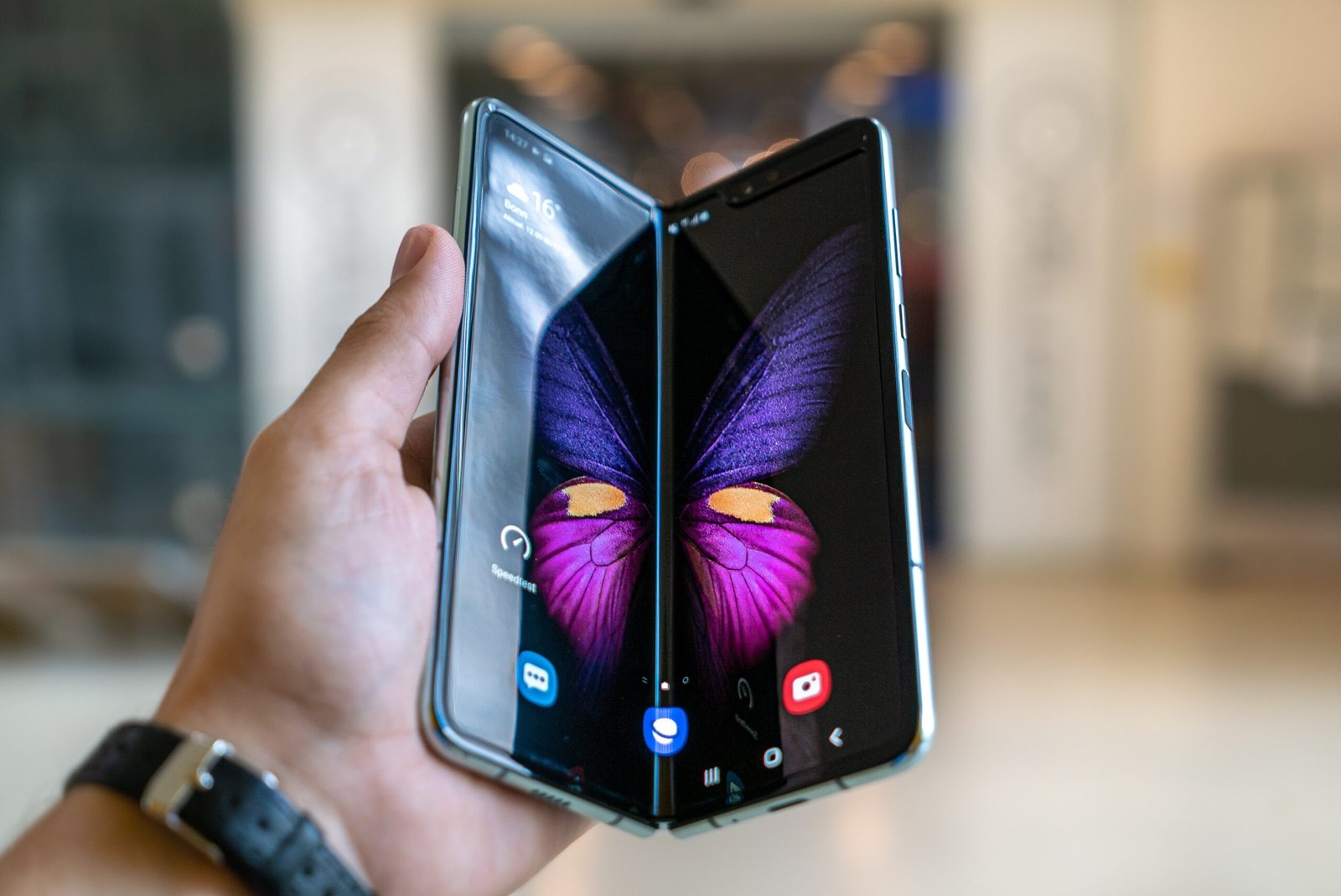

Here are the top reasons that let the foldable devices take the leap to what they are today:
- OLED is preferred over LCD: A functional LCD projects an image through several of its layers with the help of a backlight. OLED on the other hand uses screen technology that is printed on a thin polymer. This means you are directly interacting with the screen via your touch and not just a pane of glass.
- Thin screen property of OLED: Earlier, popular smartphones such as iPhone X /Samsung Galaxy Edge featured curved edges on their displays due to flexible OLED screen technology. Ever since bigshot companies are customising OLED’s screen structure (including adhesive that binds all the layers of the screen and the touch sensor) in order to make it thinner/flexible to fold/unfold.
- High PPI: Customisable proprietary layout of sub-pixels of the OLED screen for High resolution display.
- Battery power: More display surface area requires more power which is now possible due to today’s advancements in battery technology.
- Multitasking: Foldable device can have you run three screens simultaneously. Also as you unfold, the app seamlessly transfers to the bigger screen in a split second.
Different types of displays that you might come across
Type of Display | Description |
Segment LCD | Displays a single number or an alphabet per segment |
Dot Matrix | Generic device for displaying a few lines of text |
IPS | Improved LCD with high resolution, brightness and wide range of colours |
QLED | Improved LCD with LED backlighting |
OLED | An organic LED screen that is flexible, self-emitting and does not require backlighting |
AMOLED | Advance OLED with low power consumption, vivid picture quality and fast response rate |
Explore DIY project on IPS: Displaying images on ST7789 IPS module interfaced with ESP8266
Latest Trend: Smartphone with glass back design
Other than Foldable devices, most smartphones from well-known brands feature a glass back design. Here are the reasons why:
- Wireless charging: With a glass back, the magnetic field transfers power from the charging pad coil to the smartphone coil with negligible loss.
- RF transmission: Radio waves can easily pass through the glass, increasing the antenna performance of your smartphone offering better LTE/Wi-fi/Bluetooth signal reception.
(Note: Protecting the glass back of your smartphone is important as glass is still fragile/gets easily scratched/expensive to replace should it get damaged. )
Future Enhancements
Here are some of the insights into the future of foldable devices and upcoming smartphones:
- Worldwide adoption of the perfect formula for a foldable device i.e.
Thinner and rigid screen ∝ Non-compromising high-quality display ∝ Fold/Unfold without screen wear out ∝ Lesser bulk while the device folds over itself
- We might get to witness front and rear displays in future smartphones. If this were true, the front screen could hold its original purpose i.e. interacting with your smartphone while the rear screen could be customised for a high-quality live feed colourful wallpaper display.
- The advent of foldable devices could be a stepping stone toward Snap-bracelet smartphones.
References:
- https://www.makeuseof.com/how-do-foldable-smartphone-screens-actually-work/
- https://www.businessinsider.in/tech/the-foldable-phone-screen-is-the-tech-trend-of-2019-heres-how-it-works/articleshow/68691819.cms
- https://www.wired.com/story/foldable-phones-brief-history-and-uncertain-future/
- https://www.ipitaka.com/blogs/news/from-metal-to-glass-are-today-s-modern-glass-backed-phones-more-fragile
For exclusive insights, tips and answers, please visit Wiztaqnia Forum.
- Can you inherit your data forever? - January 22, 2025
- The Future of Quantum Computing: What Will We Choose to Do? - January 15, 2025
- IoT based Indoor Air Quality ENS160 Monitor - November 20, 2024
